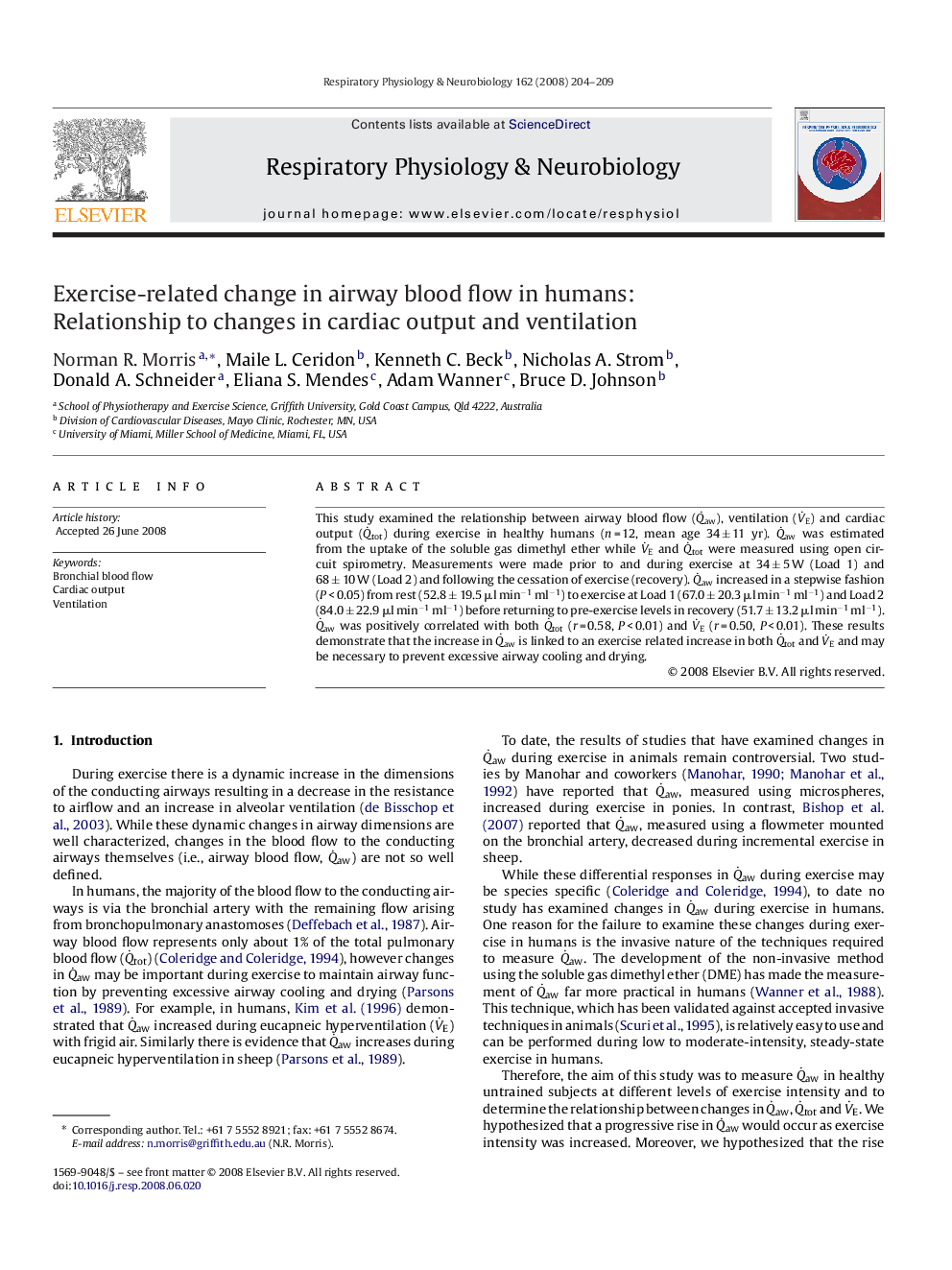| Article ID | Journal | Published Year | Pages | File Type |
|---|---|---|---|---|
| 5926663 | Respiratory Physiology & Neurobiology | 2008 | 6 Pages |
Abstract
This study examined the relationship between airway blood flow (QËaw), ventilation (VËE) and cardiac output (QËtot) during exercise in healthy humans (n = 12, mean age 34 ± 11 yr). QËaw was estimated from the uptake of the soluble gas dimethyl ether while VËE and QËtot were measured using open circuit spirometry. Measurements were made prior to and during exercise at 34 ± 5 W (Load 1) and 68 ± 10 W (Load 2) and following the cessation of exercise (recovery). QËaw increased in a stepwise fashion (P < 0.05) from rest (52.8 ± 19.5 μl minâ1 mlâ1) to exercise at Load 1 (67.0 ± 20.3 μl minâ1 mlâ1) and Load 2 (84.0 ± 22.9 μl minâ1 mlâ1) before returning to pre-exercise levels in recovery (51.7 ± 13.2 μl minâ1 mlâ1). QËaw was positively correlated with both QËtot (r = 0.58, P < 0.01) and VËE (r = 0.50, P < 0.01). These results demonstrate that the increase in QËaw is linked to an exercise related increase in both QËtot and VËE and may be necessary to prevent excessive airway cooling and drying.
Related Topics
Life Sciences
Biochemistry, Genetics and Molecular Biology
Physiology
Authors
Norman R. Morris, Maile L. Ceridon, Kenneth C. Beck, Nicholas A. Strom, Donald A. Schneider, Eliana S. Mendes, Adam Wanner, Bruce D. Johnson,
